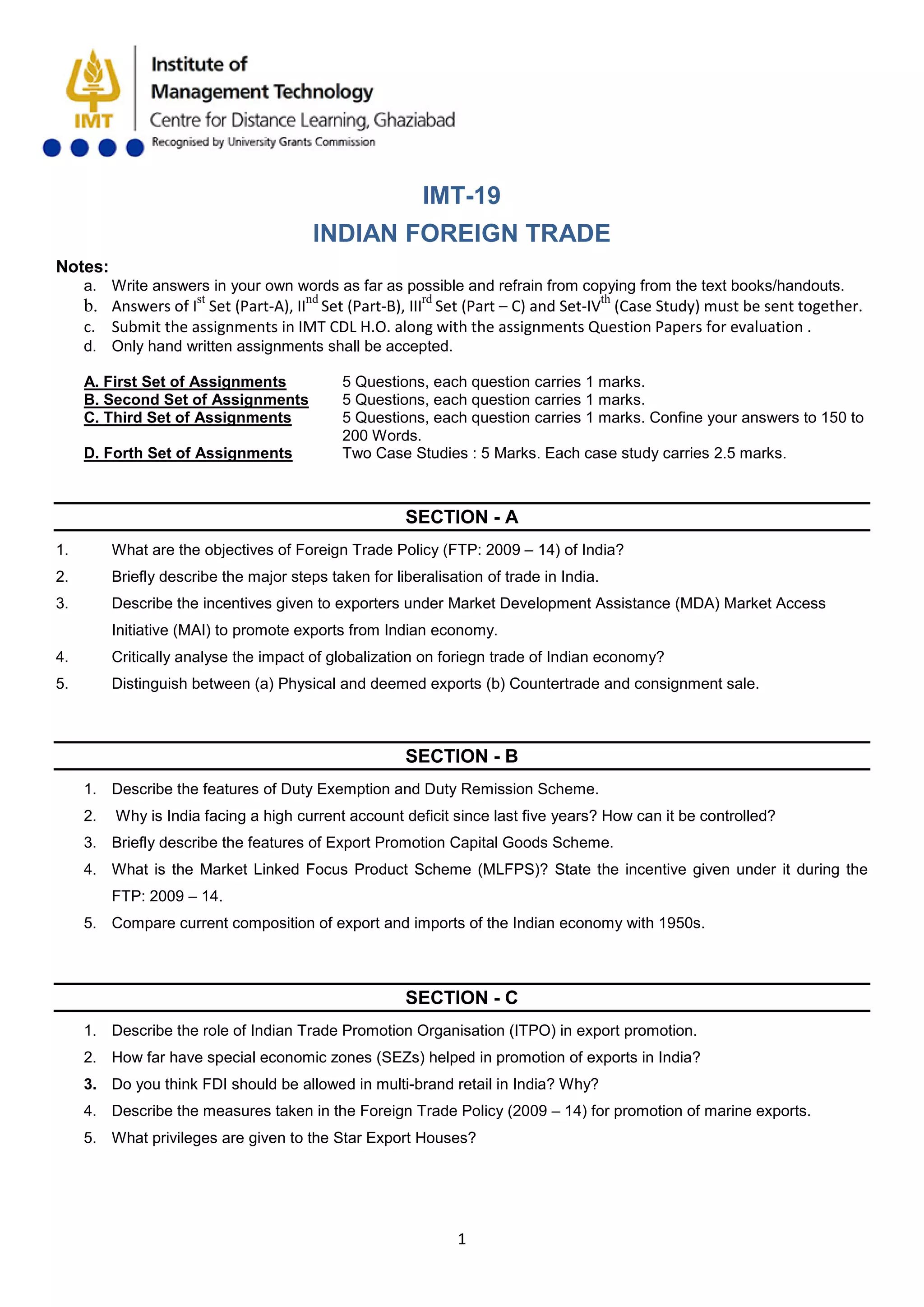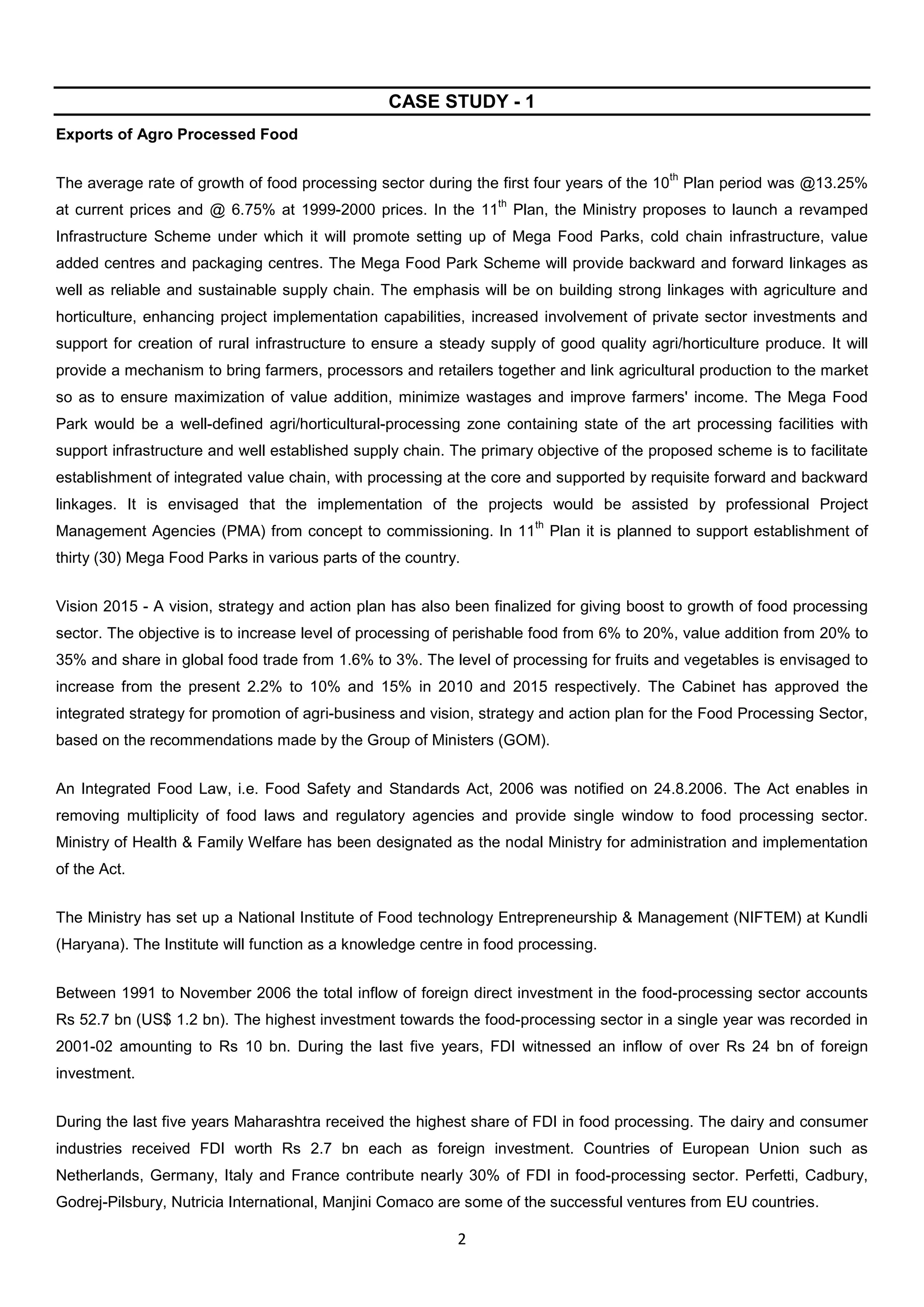The document outlines the guidelines and assignments for a course on Indian foreign trade, detailing various case studies and questions related to trade policy and market strategies. It emphasizes the importance of original responses, the structure of assignment sets, and various topics including the role of special economic zones and the impact of globalization on trade. Additionally, it presents statistical growth in India's export sector, highlighting diversification into new markets and rising export figures despite challenges.



